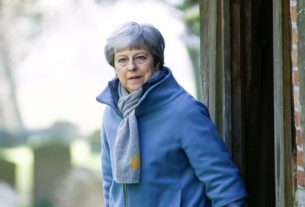EPIDEMIC: Since Wednesday, Auckland has returned to normal life, while the Prime Minister estimated on Monday that the second wave of Covid-19 was under control
- New Zealand has faced two waves of Covid-19, which caused a total of 25 deaths out of 5 million people.
- This Wednesday, the inhabitants of Auckland will be able to return to a normal life, without masks or restrictions on gatherings.
- How did this archipelago “beat the virus”, according to the words of its Prime Minister? Two confinements, closed borders, fourteen imposed on all New Zealand nationals … But this choice of health security does not cause some economic damage.
“Tonight, we are going to” level 1 “, so no more compulsory masks in transport, the application to trace our movements and the restrictions of gatherings”, rejoices Julie, 36, French expatriate in Auckland.
This Wednesday is finally the return to normality for the inhabitants of the most populous city in New Zealand. On Monday, Jacinda Ardern, the Prime Minister, said that her country had “again beaten the virus”. A victory that attracts the attention of many countries facing the second wave of Covid-19.
The best response to Covid-19?
“The American magazine Foreign Policy published a ranking of the countries in the world that have best managed the crisis… and New Zealand comes in first! », Summarizes Anne Sénéquier, doctor and co-director of the Global Health Observatory at the Institute for International and Strategic Relations (Iris). A sorting based on three factors: public health directives, budget involved and communication to the population. Indeed, this archipelago of the South Pacific and its media Prime Minister impress. The balance sheet, for the moment, rises to 25 deaths due to Covid-19 and less than 1,900 cases out of 5 million inhabitants.
It must be said that the measures were drastic. Borders closed in March, seven weeks of national and strict confinement between March and May. “The New Zealanders were very united and very serious during the confinement, recognizes Julie, mother of a 2-year-old Franco-Kiwi granddaughter. The government has also set up an application – NZ COVID Tracer app – to trace all contacts of an infected person. Each company, each store, each restaurant has the obligation to display a QR Code at the entrance and each person must scan before entering a place. The government, therefore, knows all of our actions! Government communication has been good with a daily press conference with Jacinda Ardern and Ashley Bloomfield, representing health services. ”
In the hospitals too, there was a commotion. Hari, Julie’s husband, has worked as a nephrologist at Auckland Public Hospital for seven years. He explains that caregivers and managers have spared no effort. “We had many emergency plans in place even before the Covid-19 reached our shores. With dedicated isolation rooms to care for patients with or suspected of being infected. Non-emergency operations have been suspended. Many consultations were made by phone or video. Visits were limited and those allowed to enter the hospital left their contact details for contact tracing and were examined. Agents who had health concerns could remain teleworked.
Second wave more complicated
But in mid-August, after 102 days without any contamination, new cases of Covid-19 push the Prime Minister to make a difficult decision: to impose a re-containment in Auckland. Certainly less strict: restaurants and shops open, masks recommended, but not imposed outside… “The second wave took us a little by surprise, admits Julie. It was announced on a Tuesday evening for a reconfinement at noon on Wednesday. I think it hurt a lot of morale! ”

To the point that some criticism appeared vis-à-vis the Prime Minister, who was playing for re-election with legislative elections postponed to October 17. “I had the impression that the electoral campaign was invited much more into the discussions around the second confinement, mixed with the weariness of people,” she continues. Everyone was well aware that after the efforts of the first containment, it was for Jacinda not to lose the battle of the Covid, so close to the elections. The second wave was less strong, with four deaths.
At the beginning of September, Auckland returned to level 2, therefore to a gradual deconfinement. And this Wednesday, the alert is over. Kiwis live with a new sense of security that is rare in these times of a pandemic. On October 18, fans will even be able to cheer on the All Blacks against Australia in a packed stadium! “Everyone is very happy to be able to meet again, to schedule weekends and events, rejoices Julie. It’s been six months since everything had been cancelled… ”But if life recovers its rights and the agendas start to fill again, it is not yet a real return to normality for Hari and Julie. “The hardest thing as expats is not the Covid, but the lack of visibility on the opening of borders recognizes the latter, whose family lives in France and the in-laws in India.
The strengths of the country
How did this country manage to get out of the epidemic? “They used the tools we all have in our therapeutic arsenal: social distancing, room ventilation, applications like Stop Covid, Anne Sénéquier list. What sets them apart is strong confidence in their executive, which is found in the Scandinavian countries, especially Sweden. And when trust is broken, decisions are quick to come. The Minister of Health, David Clark, was thus forced to resign because he had allowed himself to go to the beach with his family in April … ignoring the confinement imposed on the country.
However, New Zealand cannot export this “model” because it has important advantages. “New Zealand is an island, so it is much easier to close the borders,” recalls Anne Sénéquier, researcher. Being at the end of the world, it is located outside of airport hubs and major international communications routes. ”
“We also have a low population density (18 inhabitants per km2, against 122 in France), adds Hari. This made physical distancing easier. In addition, the government provided free food and accommodation in major hotels for expatriates returning to New Zealand. This has helped the isolation of potential cases, although it has cost taxpayers a lot of money… ”
What limits to this policy?
If Jacinda Arvern has every interest in claiming victory today, Anne Sénéquier is less optimistic. “As long as the virus is circulating in the world, we can’t say it’s over. The Covid-19 is soaring in South Asia, Indonesia, which is not so far away, does not react in time. This means that there is a reservoir of contamination and that we must remain vigilant. ”
Moreover, it is clear that the choice of health security was made to the detriment of the economy. Two confinements in less than six months is a lot. And the GDP suffers: with a drop of 12.2%, New Zealand is now experiencing a historic recession. “The country was off to a good start after the first confinement, so from an economic point of view, reconfining was a blow, especially for tourism and restaurants/hotels”, illustrates Julie, real estate agent and project manager. Other sectors, which depend on workers from abroad, are also likely to suffer. In particular the harvest of kiwis and cherries usually carried out by seasonal workers from the Pacific islands.
But above all, this choice of a policy that resembles the “stop-and-go”, alternating period of confinement and returns to normal, cannot be sustainable. “In the long term, we cannot confine the largest city in the country, nuance Anne Sénéquier. This may be the limit of the system. Can New Zealand exclude itself from the world for two years? With the consequences, one can imagine on the economy, on students, and even on the health of those who will be weakened by the economic crisis? ”




